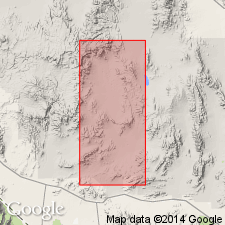
- Usage in publication:
-
- Oak Spring formation*
- Modifications:
-
- Named
- Dominant lithology:
-
- Tuff
- Rhyolite
- Latite
- Dacite
- Limestone
- Gravel
- AAPG geologic province:
-
- Great Basin province
Summary:
Name assigned to rocks at Oak Spring Butte and correlative rocks in other parts of the testing area, Nye Co, NV in the Great Basin province. No type locality designated. Consists of rhyolitic lava flows, tuff, and other volcanic rocks--such as biotitic tuff, tuff breccia, tuff with shards of pumice. The tuffs are chalky, white, cream or gray. They may be noncrystalline earthy dull, porous or compact, hard, dense, welded with glassy quartz phenocrysts. Most of the tuff lavas thought to have been deposited in water, probably in a large lake or basin. Some of the lavas are aphanitic to phaneritic, some are vesicular, some have flow banding. Rhyolite is the dominant type but some are dacite and latite. Some pumice. Some obsidian beds. Occurs as resistant, ledge-forming landmarks. Variations in color and lithology take place in short distances. A few sedimentary rocks--gray fossiliferous, marly limestone and well-cemented gravels occur near base of formation. Is at least 2,000 ft thick. Gastropods probably late Tertiary or probably Miocene age found in the limestones. Formation assigned Miocene or younger age. Geologic map. Columnar section.
Source: GNU records (USGS DDS-6; Denver GNULEX).
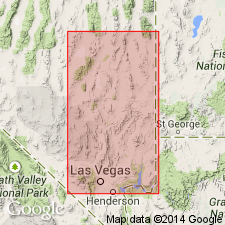
- Usage in publication:
-
- Oak Spring formation*
- Modifications:
-
- Age modified
- AAPG geologic province:
-
- Great Basin province
Summary:
Upper part of basal limestone of Oak Spring in Nye Co. contains fossil fish, FUNDULUS, that is restricted to the Pliocene and Quaternary. Fish occurs 150 ft above base of exposed sequence. Lower part of this limestone is similar to Miocene limestone in Lincoln Co., and contains poorly preserved gastropods which have been dated as late Tertiary, possibly Miocene.
Source: GNU records (USGS DDS-6; Menlo GNULEX).
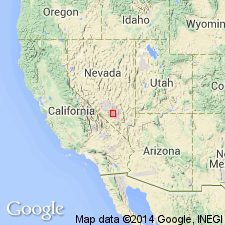
- Usage in publication:
-
- Oak Spring formation*
- Modifications:
-
- Revised
- AAPG geologic province:
-
- Great Basin province
Summary:
Is a formation that crops out extensively in the Nevada Test Site, Nye Co, NV in the Great Basin province. Consists of welded and nonwelded silicic tuff, tuffaceous sandstone and siltstone, rhyolite, rhyodacite, and basalt at least 2,200 ft thick. As a result of mapping, the formation can be divided into members. All of the members, except for the lower member, are named in this report. The members are (in ascending order): lower member, Tub Spring, Grouse Canyon, Survey Butte, Stockade Wash, Topopah Spring, Tiva Canyon, and Rainier Mesa Members. Cross sections. Of Miocene? or younger age.
Source: GNU records (USGS DDS-6; Denver GNULEX).
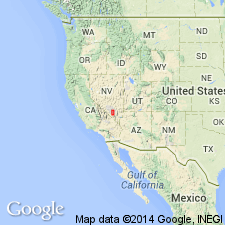
- Usage in publication:
-
- Oak Spring Group*
- Modifications:
-
- Revised
- AAPG geologic province:
-
- Great Basin province
Summary:
Oak Spring Formation raised to group rank and divided into the Indian Trail Formation of late Miocene or early Pliocene age, new, at base, and the Piapi Canyon Formation of early Pliocene or younger age, new, at top in the northern part of the Nevada Test Site, Nye Co, NV in the Great Basin province. The Indian Trail is divisible into the (ascending): lower member, Tub Spring and Grouse Canyon Members. Tub Spring and Grouse Canyon were formerly members of the Indian Trail Formation. The Piapi Canyon is divided into the (ascending): Survey Butte, Stockade Wash, Topopah Spring, Tiva Canyon, and Rainier Mesa Members of the Indian Spring. Overlies Paleozoic rocks. Rainier Mesa is overlain by the basalt of Skull Mountain at Skull Mountain. Tiva Canyon and Rainier Mesa tongue into the andesitic rocks of Wahmonie Flat. Elsewhere, the Rainier Mesa shown as the uppermost unit exposed. Cross section.
Source: GNU records (USGS DDS-6; Denver GNULEX).
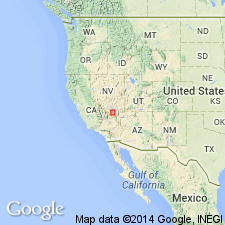
- Usage in publication:
-
- Oak Spring Group*†
- Modifications:
-
- Abandoned
Summary:
Additional mapping since 1962 has resulted in new stratigraphic data that requires another revision of the nomenclature used in the Test Site. Use of term Oak Spring Group for all Tertiary rocks is no longer practicable. The relationships of the diverse units formerly assigned to the Oak Spring is complex. Name Oak Spring Group abandoned. Former Oak Spring includes (not listed as a stratigraphic sequence) some unnamed units, the Belted Range and Timber Mountain Tuffs, Indian Trail, Salyer, and Wahmonie Formations, and the Paintbrush (new) and Timber Mountain (new) Tuffs of the Piapi Canyon Group. Salyer and Wahmonie named in an accompanying paper.
Source: GNU records (USGS DDS-6; Denver GNULEX).
For more information, please contact Nancy Stamm, Geologic Names Committee Secretary.
Asterisk (*) indicates published by U.S. Geological Survey authors.
"No current usage" (†) implies that a name has been abandoned or has fallen into disuse. Former usage and, if known, replacement name given in parentheses ( ).
Slash (/) indicates name conflicts with nomenclatural guidelines (CSN, 1933; ACSN, 1961, 1970; NACSN, 1983, 2005, 2021). May be explained within brackets ([ ]).

